Tigers Release Revisited
- by Kelvin Miyahira
Tiger Release Revisited
People still have a lot of questions about Tiger’s Release and how to perform it. Despite doing an earlier article on this, it is still being misunderstood and that makes it even more difficult (or impossible) to do. So maybe taking a new look at this process is in order and that’s what we’ve got.
Genius Rick Malm was able to take his Casio EX-F1 digital camera to the Accenture Match Play last month to hopefully get a shot at Tiger……but he didn’t show up for the practice round on Monday. Oh well. But due to perhaps luck, he was able to get a few really good videos of other top players. What he found was an absolutely great new way to look at the swing. Let me explain.
“The plane, boss! The plane!”
As Herve Villechaize’s character Tattoo on Fantasy Island would always say while pointing to the sky, we too, are overly obsessed with the plane. Yes, it is important but if we are so plane obsessed, we forget that there are other important facets to a good golf swing……..like one’s body movements that actually create the plane or the intricate hand movements that need to be seen.
Just Plane Obsessed
Prior to this, we were plane obsessed as well. So we were used to seeking perfect positions for the camera especially when looking for secrets to the plane. The camera must be set up parallel to the target line (when looking down the line) and between the feet and ball. But a funny thing happened on the way to the “perfect” plane view.
Lucky
While Rick waited patiently for Tiger to appear at the Accenture Match Play practice facilities (he didn’t on Monday), he wound up taking videos of the other top 64 players in the world.
And while sitting on the bleachers surrounding the driving range, he was not able to get perfect angles on each of the players since there was a bit of a crowd there as well. But what he got in terms of video, may unlock the secrets to the moves that are so difficult to learn.
Here’s what we found. By having the camera a bit off angle (maybe 20 degrees or so off), we were able to see some previously unseen and tremendous views of Rod Pampling’s hands on the downswing. I also had RP’s video from US Open 2008 last summer so I will put these two screenshots side by side so you can see what we’ve all been missing. Of course from the traditional down the target line view, all of this would be nearly impossible to see.
Rod Pampling
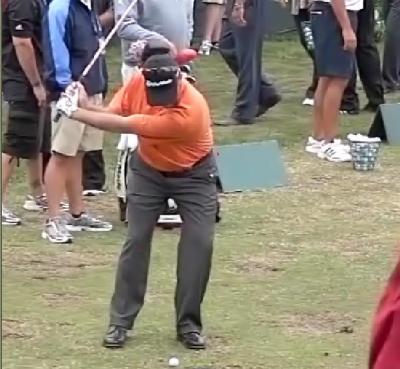

At the beginning of the downswing, everything looks normal. On the right, his left wrist position appears to be a little cupped.
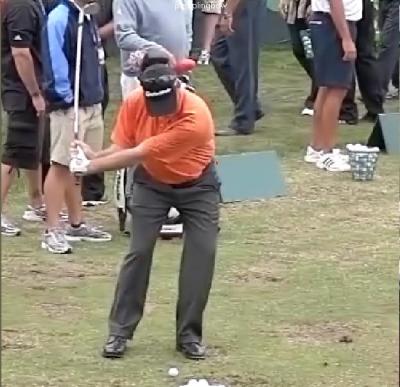
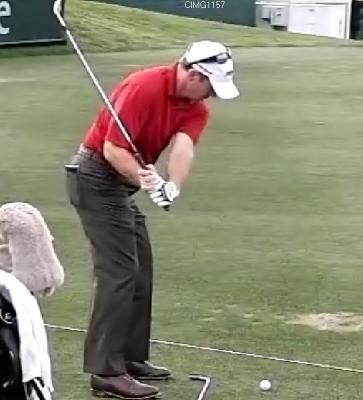
Still quite similar to the earlier position.
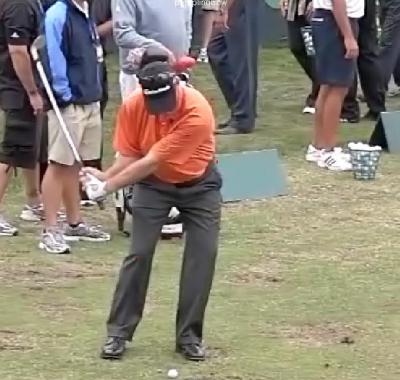
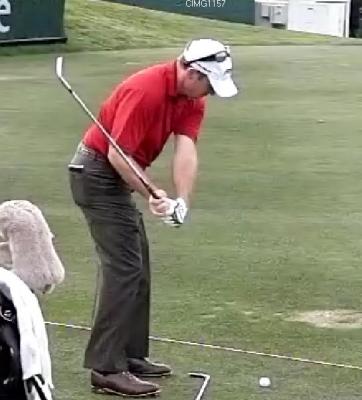
Here you can see the left wrist beginning to flatten on the right picture. Interesting to note, the left picture shows nothing definitive about this.
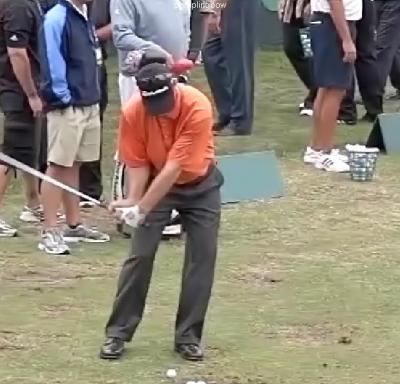
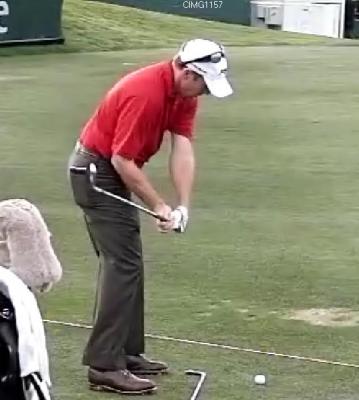
The clubface appears to be closing at a slightly faster rate. Left wrist beginning to appear slightly bowed.
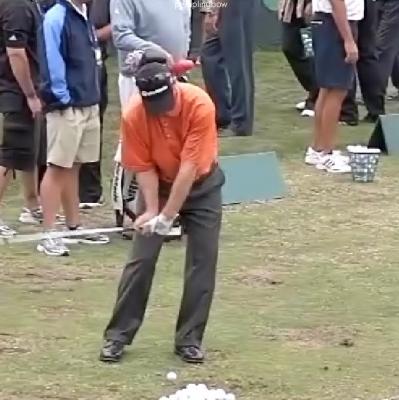
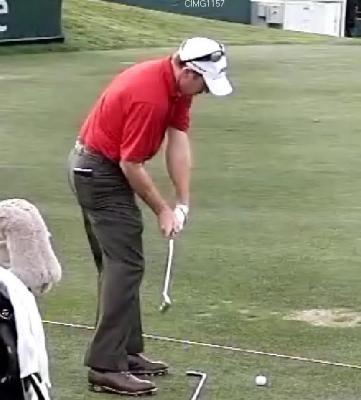
Left wrist definitely bowed. Even the left picture shows the back of the left hand beginning to face down.
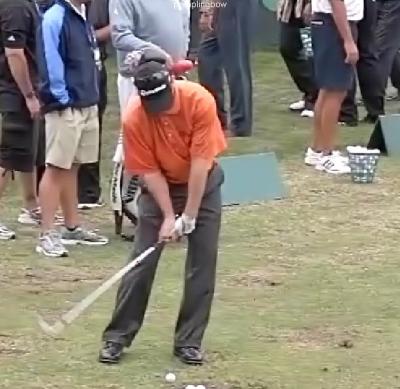
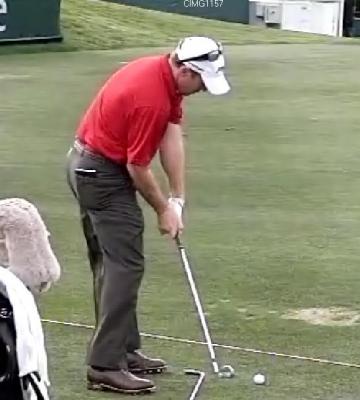
Little more bowed.
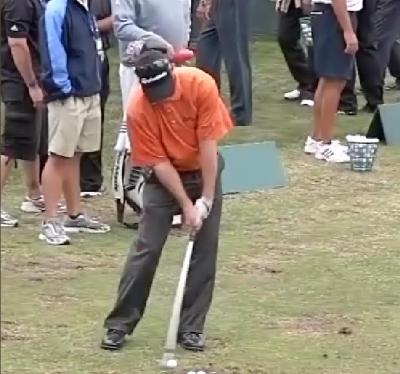
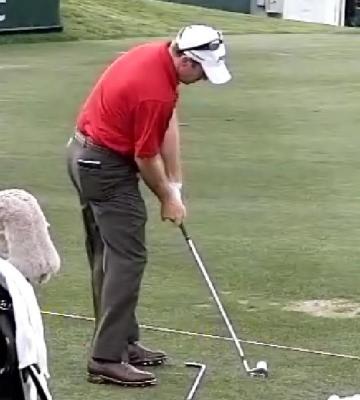
Great position at impact.
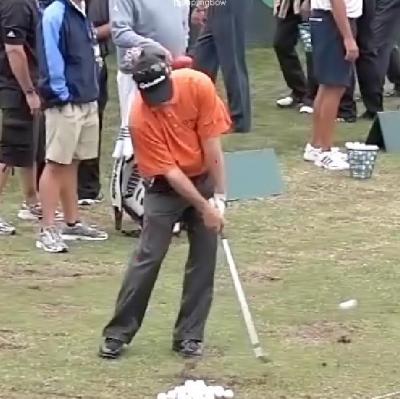
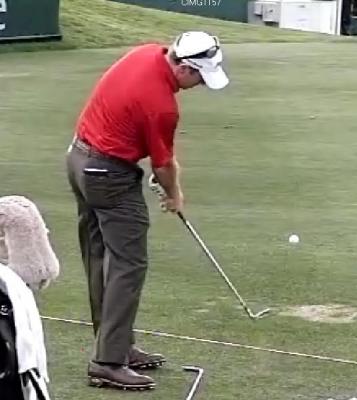
Position of the left wrist is held while the body is moving everything through the hitting area.
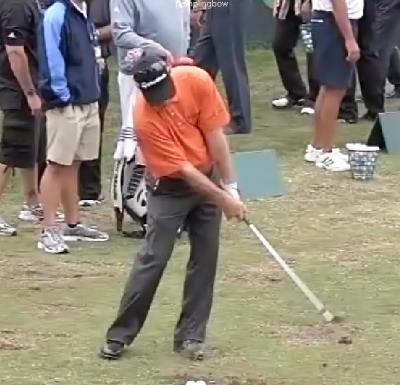
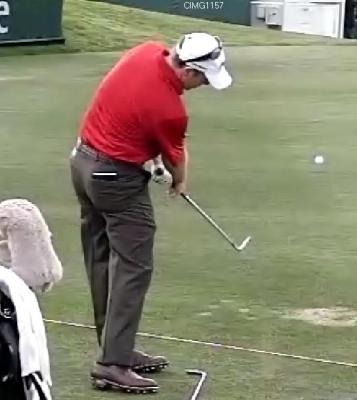
Slightly less bowed appearance. The left wrist is beginning to fold (cup) in the opposite direction.
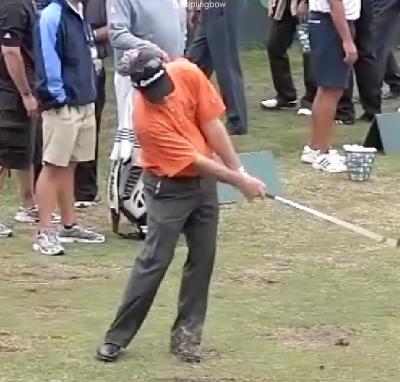
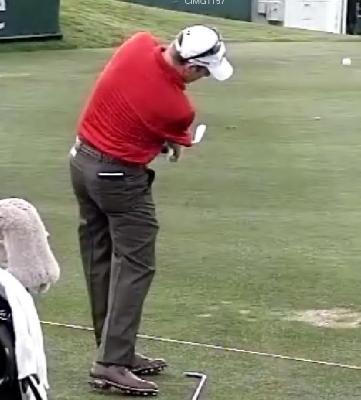
Left wrist is beginning to move into a slightly cupped position.

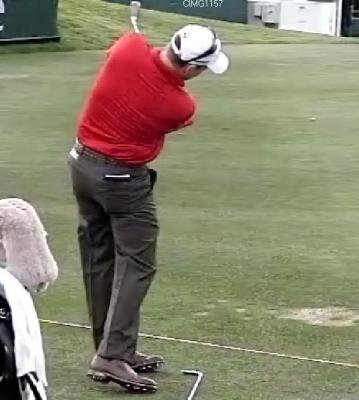
Slightly cupped left wrist position without any folding or additional rotation of the left forearm and wrist.
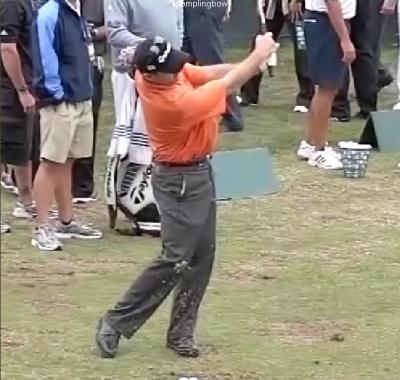
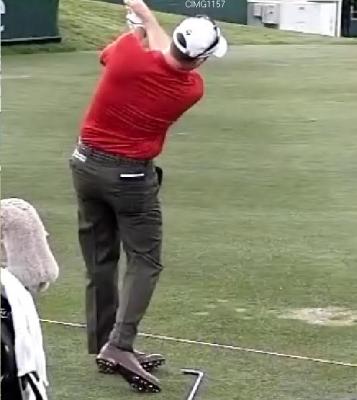
Left wrist is definitely cupped at this point.
A Variation
There is much confusion in many people’s minds about the follow through. Do the hands turn over or not? Tiger does not. Neither does Rod Pampling. But there are others that do and it is used on the PGA tour as well.
Tiger Release or Hand Release
The impact position of a player is governed by the thoughts of how to drive through the ball with the body (2nd fire) or passively glide through the ball while releasing with the hands.

While these are two different clubs Mari is hitting, the impact position with the hands is similar.
Where the differences lie are in the body position. On the left photo, Mari has her body firing. Legs and glutes are really firing and this moves the shoulders more as well.
On the right, she has a much more passive body.
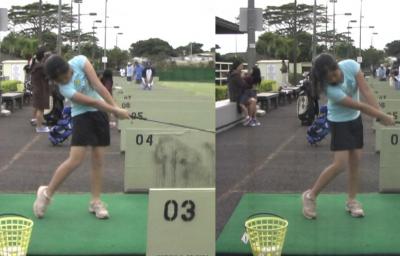
On the left, you can really see the shoulders still going hard whereas on the right the shoulders have slowed considerably. This undoubtedly causes changes to the left arm.
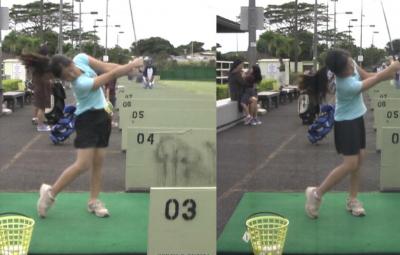
Here is where all the movements become really apparent. On the left, Mari’s left arm is totally extended with the left elbow pointing directly away from the camera. On the right, her left elbow is folded down and pointing more towards the ground.
Pat Perez
Pat is a very good player; he displays the sort of hands timed release that is different than the way Tiger does it. What is very instructive about this is that Pat shows that there is more than one way to hit the ball well and play on tour.


Notice that before impact, Pat’s left wrist is more cupped.

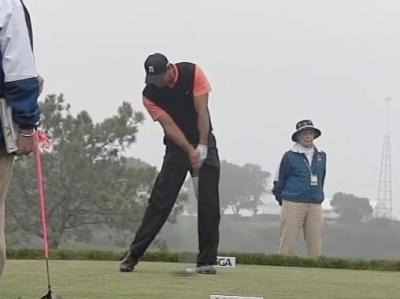
At impact, still looks slightly cupped compared to Tiger.

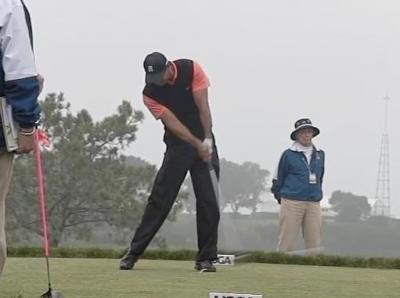
Now it appears to be bowing more while Tiger is driving his body while in more of a holding pattern with the hands.

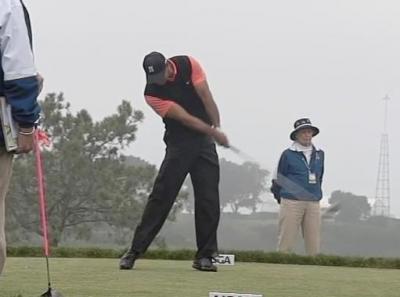
Pat is really continuing to rotate the left arm at a much faster rate than his body is turning. Tiger has released his left wrist slightly as the shaft now catches up to his right arm.


Notice the position of Pat’s left elbow. Looks similar to Mari’s in the earlier example. Shoulders are not moving anywhere near as much as Tiger’s.

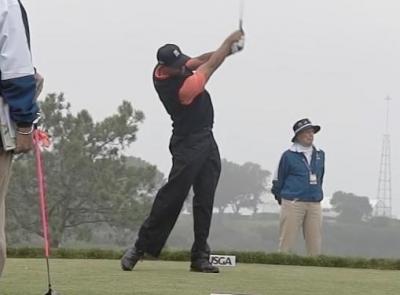
Pat really has his left wrist bowed at this position. His right wrist has a cupped position vs. Tiger’s flatter back of the right hand.
From behind this is very easy to see. Tiger definitely is not rolling his left forearm. His left wrist is now cupped with the hands in a neutral position rather than turned over.
Summary
What I hope to have conveyed in these pictures is how early this movement in the left wrist starts. From being slightly cupped at the start of the downswing, to flattened out by the time the left arm is at chest high, and then to be bowed well before impact.
The movement of the left wrist is a slow process that must be done early or it may never happen, as is the case with most amateurs. The left wrist would be cupped way too late in the downswing and the inevitable flip must occur.
The other important point to be made is that the body is inherently tied to the movements of the arms and the wrists. Your body must facilitate the movements of the hands and arms instead of inhibiting it.
But Wait!!!
The still shots were taken from videos from June, 2008 at the US Open prior to Tiger’s knee surgery. But his swing has changed since then and Hank Haney’s influence in his swing is becoming more apparent. Several interesting things are showing up. One is the greater lateral shift to his left side supposedly to protect his knee (beyond the chi line). This is definitely slowing his lower body through impact (less of a 2nd fire)……… And the other is that his hands can no longer move this way through impact.
Tiger still has the best short game and clutch putting that golf has ever seen. And his mental strength is almost supernatural so let’s see if he can win the Masters with that. Let’s give it some time before we document the new changes and judge the new Tiger.
People still have a lot of questions about Tiger’s Release and how to perform it. Despite doing an earlier article on this, it is still being misunderstood and that makes it even more difficult (or impossible) to do. So maybe taking a new look at this process is in order and that’s what we’ve got.
Genius Rick Malm was able to take his Casio EX-F1 digital camera to the Accenture Match Play last month to hopefully get a shot at Tiger……but he didn’t show up for the practice round on Monday. Oh well. But due to perhaps luck, he was able to get a few really good videos of other top players. What he found was an absolutely great new way to look at the swing. Let me explain.
“The plane, boss! The plane!”
As Herve Villechaize’s character Tattoo on Fantasy Island would always say while pointing to the sky, we too, are overly obsessed with the plane. Yes, it is important but if we are so plane obsessed, we forget that there are other important facets to a good golf swing……..like one’s body movements that actually create the plane or the intricate hand movements that need to be seen.
Just Plane Obsessed
Prior to this, we were plane obsessed as well. So we were used to seeking perfect positions for the camera especially when looking for secrets to the plane. The camera must be set up parallel to the target line (when looking down the line) and between the feet and ball. But a funny thing happened on the way to the “perfect” plane view.
Lucky
While Rick waited patiently for Tiger to appear at the Accenture Match Play practice facilities (he didn’t on Monday), he wound up taking videos of the other top 64 players in the world.
And while sitting on the bleachers surrounding the driving range, he was not able to get perfect angles on each of the players since there was a bit of a crowd there as well. But what he got in terms of video, may unlock the secrets to the moves that are so difficult to learn.
Here’s what we found. By having the camera a bit off angle (maybe 20 degrees or so off), we were able to see some previously unseen and tremendous views of Rod Pampling’s hands on the downswing. I also had RP’s video from US Open 2008 last summer so I will put these two screenshots side by side so you can see what we’ve all been missing. Of course from the traditional down the target line view, all of this would be nearly impossible to see.
Rod Pampling


At the beginning of the downswing, everything looks normal. On the right, his left wrist position appears to be a little cupped.


Still quite similar to the earlier position.


Here you can see the left wrist beginning to flatten on the right picture. Interesting to note, the left picture shows nothing definitive about this.


The clubface appears to be closing at a slightly faster rate. Left wrist beginning to appear slightly bowed.


Left wrist definitely bowed. Even the left picture shows the back of the left hand beginning to face down.


Little more bowed.


Great position at impact.


Position of the left wrist is held while the body is moving everything through the hitting area.


Slightly less bowed appearance. The left wrist is beginning to fold (cup) in the opposite direction.


Left wrist is beginning to move into a slightly cupped position.


Slightly cupped left wrist position without any folding or additional rotation of the left forearm and wrist.


Left wrist is definitely cupped at this point.
A Variation
There is much confusion in many people’s minds about the follow through. Do the hands turn over or not? Tiger does not. Neither does Rod Pampling. But there are others that do and it is used on the PGA tour as well.
Tiger Release or Hand Release
The impact position of a player is governed by the thoughts of how to drive through the ball with the body (2nd fire) or passively glide through the ball while releasing with the hands.

While these are two different clubs Mari is hitting, the impact position with the hands is similar.
Where the differences lie are in the body position. On the left photo, Mari has her body firing. Legs and glutes are really firing and this moves the shoulders more as well.
On the right, she has a much more passive body.

On the left, you can really see the shoulders still going hard whereas on the right the shoulders have slowed considerably. This undoubtedly causes changes to the left arm.

Here is where all the movements become really apparent. On the left, Mari’s left arm is totally extended with the left elbow pointing directly away from the camera. On the right, her left elbow is folded down and pointing more towards the ground.
Pat Perez
Pat is a very good player; he displays the sort of hands timed release that is different than the way Tiger does it. What is very instructive about this is that Pat shows that there is more than one way to hit the ball well and play on tour.


Notice that before impact, Pat’s left wrist is more cupped.


At impact, still looks slightly cupped compared to Tiger.


Now it appears to be bowing more while Tiger is driving his body while in more of a holding pattern with the hands.


Pat is really continuing to rotate the left arm at a much faster rate than his body is turning. Tiger has released his left wrist slightly as the shaft now catches up to his right arm.


Notice the position of Pat’s left elbow. Looks similar to Mari’s in the earlier example. Shoulders are not moving anywhere near as much as Tiger’s.


Pat really has his left wrist bowed at this position. His right wrist has a cupped position vs. Tiger’s flatter back of the right hand.
From behind this is very easy to see. Tiger definitely is not rolling his left forearm. His left wrist is now cupped with the hands in a neutral position rather than turned over.
Summary
What I hope to have conveyed in these pictures is how early this movement in the left wrist starts. From being slightly cupped at the start of the downswing, to flattened out by the time the left arm is at chest high, and then to be bowed well before impact.
The movement of the left wrist is a slow process that must be done early or it may never happen, as is the case with most amateurs. The left wrist would be cupped way too late in the downswing and the inevitable flip must occur.
The other important point to be made is that the body is inherently tied to the movements of the arms and the wrists. Your body must facilitate the movements of the hands and arms instead of inhibiting it.
But Wait!!!
The still shots were taken from videos from June, 2008 at the US Open prior to Tiger’s knee surgery. But his swing has changed since then and Hank Haney’s influence in his swing is becoming more apparent. Several interesting things are showing up. One is the greater lateral shift to his left side supposedly to protect his knee (beyond the chi line). This is definitely slowing his lower body through impact (less of a 2nd fire)……… And the other is that his hands can no longer move this way through impact.
Tiger still has the best short game and clutch putting that golf has ever seen. And his mental strength is almost supernatural so let’s see if he can win the Masters with that. Let’s give it some time before we document the new changes and judge the new Tiger.

